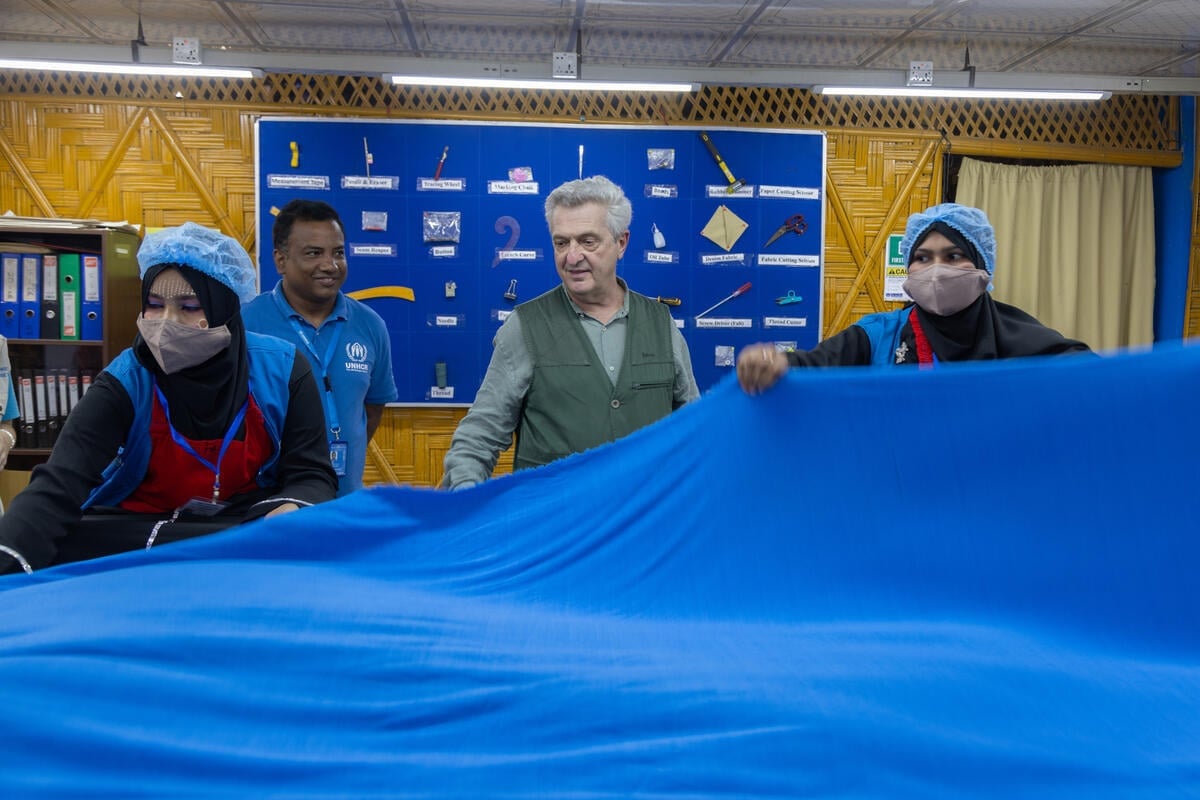Rohingya emergency
Rohingya emergency
They joined previous influxes of Rohingya who fled the country in the 1970s and 90s. Today, more than 1 million Rohingya refugees live in Bangladesh, most of them in Cox's Bazar district, near the border with Myanmar. The strain on the local host community and its already stretched facilities and services has been immense.

Registered Rohingya refugees in Bangladesh
Visit the Data Portal for more statistics
Bangladesh hosts the largest refugee settlement in the world.
Most Rohingya refugees are living in 33 camps in Cox’s Bazar, which together make up the world’s largest refugee settlement. Nearly eight years on from the most recent major influx from Myanmar, this is also one of the world's largest protracted refugee situations.
Since 2017, the humanitarian community has closely collaborated with the Government of Bangladesh to respond to the humanitarian repercussions of this massive displacement. Despite these efforts, living conditions in the densely populated camps are dire, particularly for women and children who are vulnerable to violence, exploitation, and human trafficking. Ensuring a safe environment for refugees, including by protecting them from natural hazards, fire, and environmental degradation, remains a challenge. Between June and October, the monsoon season brings intense rainfall and strong winds, elevating the risk of floods and landslides for hundreds of thousands of Rohingya living in fragile shelters made of bamboo and tarpaulin.
Intense conflict in Myanmar’s Rakhine State in recent times has worsened the plight of the Rohingya still living there and left many with no choice but to risk the journey to Bangladesh.
“We have overcome so many traumatic incidents. Violence in the camps is increasing, and even the sound of a balloon bursting makes people afraid at night. We are afraid that we will never go back to our homeland. We worry about our children’s futures.”
Together with our partners, we are working in support of the Bangladesh government to respond to the massive humanitarian needs.
In the opening days, weeks and months of the crisis, UNHCR airlifted more than 1,500 metric tons of emergency life-saving aid to Bangladesh – including blankets, plastic sheets, sleeping mats, family tents, plastic rolls, kitchen sets, jerry cans and buckets.
Together with our partners, we are also helping the government to develop new sites that can safely accommodate refugees. This includes funding a road to facilitate construction and refugee access, supporting site planning, building latrines and wells, improving the water and sanitation facilities and distributing shelter materials.
In an effort to improve sanitation and access to drinkable water, we have built thousands of latrines and water points for the refugees, thereby mitigating the risks of health problems such as acute watery diarrhoea.
UNHCR is working to mainstream refugee protection in all refugee settlements. With its partners, it is developing a referral system and safe spaces for survivors of gender-based violence. We are also enhancing efforts to identify and refer children at risk for the appropriate support.
Life in the world’s largest refugee settlement
Are you a refugee or asylum-seeker? Find information about your rights and available services on our HELP site.
Are you looking for data on displacement in Myanmar? Visit the UNHCR data portal for the latest data and statistics on refugees and other displaced persons.
For information on UNHCR's operational response, budgets and funding, please visit the Myanmar situation page on Global Focus.



















